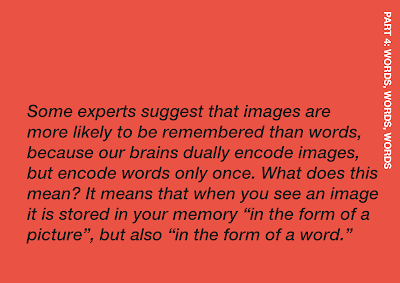Wordless Novels Creatives
Frans Masereel
Lynd Ward (article by Art Spiegelman)
Helena Bochořáková-Dittrichová
Shaun Tan
Publishers of Graphic Novels
The lecture slides are shown below that covered the main points of the works under discussion;
The purpose of the lecture was to introduce the possibility of telling stories purely through the medium of the image. We looked at a range of influential creatives in this area and how these visions could become the inspirational starting point for a 21st Century renaissance of this form of making. It is my assertion that graphic narratives will become the dominant form of storytelling. If the human race wants to stay literate it will have no choice. It is part of our evolution. All our major ideas will be conveyed using visual communication.
The communication of complex ideas to a diverse but visually sophisticated audience is the purpose of art. We still need our emotions catered for and to that end the incorporation of storytelling sources such as novels, poems, comics, movies, plays and Tik Tok will help you to find your own voice. This is the way to develop your personal visual language. When I am creating art I feel that I have a purpose and that my life has meaning. The rest of my life is pretty mundane when compared to the creative process and intellectual growth I derive from it. This is exactly why the drama in stories acts as a record of life with the dull bits removed.
If you want to follow in the footsteps of the artist shown above then you need to first analyse the structure of Wordless Novels. You should also identify these formal design principles as you do this:
Contrast
Affinity
Space
Line
Shape
Colour
Movement
All of these components are essential for producing engaging content and you should employ them when you are creating your own Wordless Novel. Once you have your story then think about the medium that you will use. We learn best by doing, then thinking, then doing some more and then thinking again. Use this process until you realise that you have completed your work.
References
Beronae, D.A. and Kuper, P. (2008) Wordless books. New York: Abrams.
Helena Bochořáková-Dittrichová (2016) Mi Infancia : 1929. Vitoria-Casteiz: Sans Soleil Ediciones.
Masereel, F. and Lawicki, R. (2021) Frans Masereel - Es gibt keine schönere Farbe als das Schwarz. Köln: Snoeck.
McNaught, J. (2018) Kingdom. First vedition edn. London ; New York: Nobrow.
Tan, S. (2014) Theœ arrival. Paperback edition edn. Melbourne: Lothian Books.
Walker, G.A., Masereel, F., Ward, L., Patri, G., Glas, A. and Hyde, L. (2021) Graphic witness. Second edition edn. Buffalo, New York ; Richmond Hill, Ontario: Firefly Books.
In the spirit of the Wordless Novel you are to Create a five frame sequence artwork selected from a choice of 12 images shown below. Be as experimental and imaginative as you can with the five frames that you select. Be fearless in your creativity.
Themes to help you construct your story are:
Nature
Adventure
Time
Use your analysis of visual structures to help you think about your Narrative Transitions for your new story. Once you have completed the task create a second story that will work as a contrast and comparison to the first one (this helps you to see if the original story is any good).
Test your wordless story with an audience to discover what it communicates. Use this feedback to help you to improve your five frames sequence. Expect great things from yourself and they will come.
All images by Karl Foster or Caroline Thomson © 2011.



























No comments:
Post a Comment